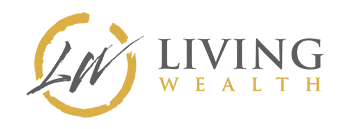In this episode, we discuss the process of turning liabilities into assets to put more money back in your pocket.
Those of you who are followers of Robert Kiyosaki have heard him preach time and time again about creating more assets and limiting liabilities. He occasionally even speaks about how to turn a liability into an asset. Today, we’ll share some unique strategies you can use to do what may seem impossible.
Topics Discussed in Turning Liabilities into Assets:
- Robert Kiyosaki
- Why people often ask the wrong question
- Building your wealth and not someone else’s
- The fundamentals of wealth and money
- How assets differ from liabilities and the importance of knowing
- Using whole life as a tool for protecting, growing, and keeping your money in motion
- Debt
- The false wisdom of saving merely 10%
- Why so much of your money is “walking out the door”
Takeaways:
- The 90% of the money that’s walking out the door, what if we can start to recapture that money, bring it back in as opposed to just spend it.
- When we go buy a car and we use infinite banking, we don’t make payments to a bank anymore where they get all the money. Instead, we start making payments back to the policy where we end up getting all the money back without doing much different.
Podcast transcript for episode 83: Save Money Financing College
Nate: In this episode we will discuss how to put more money back in your pocket by turning your liabilities into assets. She’s Holly and she helps people find financial freedom.
Holly: He’s Nate, he makes sense out of money. This is Dollars and Nonsense. If you follow the herd, you will be slaughtered.
Nate: Everyone welcome back. Today we’ve got an episode that those of you who are followers of Robert Kiyosaki, also known as the rich dad, poor dad guy. You’ve probably heard him preach time and time and time again and that’s actually what really spawned the thought to do an episode of creating more assets and limiting liabilities and even how to turn a liability into an asset. We’d like to show you guys how to do that today and we’re going to give credit to Robert Kiyosaki a little bit for what he has done. So Holly, what did start this episode? I mean, what’s the background here? Why are we talking about assets and liabilities today?
Holly: I think because, in this article by Robert Kiyosaki, he said, “Often people are asking the wrong question.” Often people keep asking, “How can I get rich?” or “How can I get rich quickly?”, and really that is the wrong question to be asking because oftentimes we’re looking to see how somebody else became rich or wealthy. Yet we don’t really have the fundamental basics of just understanding for me, how does money work and what does it mean to be rich? And even if you want to get rich quick, oftentimes lottery winners and individuals who come into significant windfalls of money, they spend it or they lose it all because they never knew really how to keep the money. How do you actually keep money in your pocket instead of giving it to everybody else?
Nate: Exactly. I mean you bring up like lottery winners and athletes and people who came from maybe a poor, middle class background or suddenly have so much money and they don’t know what to do with it. I think it really comes back to, we’re just never taught what to do with it and that’s what Robert Kiyosaki tries to do. We tried to do that to some extent. It just teaches people, here’s a strategy to use to make more money, and his is very simple. For those of you who are not familiar with rich dad, poor dad or Robert Kiyosaki, it’s very simple. You start financial education by learning the difference between an asset and a liability, and to him, and Holly and I would agree with this, that an asset needs to be putting money back into your pocket and a liability takes money away from you and takes money out of your pocket.
It’s simple. If you want to get rich, you need more assets and less liability. There’s no get rich quick scheme. You’ve got to have more assets, you got to have less liability. You’ve got to find ways and avenues that put money back into your pocket. So we’re going to talk a little bit about that today, of how to do that and really how you can get wealthy by doing just that. And infinite banking, which if you’re new to the podcast, is a concept we talk about quite a bit. We think it does a really great job introducing this concept of putting money back into your pocket. So how does that work, Holly? I mean, what exactly are we talking about when we say turn a liability into an asset or get money back into your pocket? How can people use infinite banking to start their journey in that way?
Holly: It starts by understanding your purchasing a whole life insurance product with cash value. But the key there is that, and we say this all the time, you want your money to go into a policy first, and then borrow from yourself or from the life insurance company in order to create an asset with what you’re purchasing. And oftentimes we reference it that we constantly… If we buy a car, we are giving our money over to either… We paid cash and you lose the buying power of that interest. Another topic, but, if you have a payment plan, you’re taking your hard earned money and you’re constantly giving it to somebody else, versus if you put the money in the policy first and pay yourself back, you are now the banker. So the money is coming back to you and now this thing you’ve purchased, the car’s no longer a liability. It’s an asset.
Holly: Because banks make money off loans and the only way you’re going to make money is to keep money in your pocket. But as long as you’re sending the money out of it and giving it to somebody else, you literally are not changing your financial scope or even your financial life at all. You’re still on the hamster wheel giving every… You’re doing all the work and everybody else is getting all the money.
Nate: Yeah, exactly right. And I mean, one of the things we talk about is rich dad, poor dad, Robert Kiyosaki always mentions everyone thinks their home is an asset. If you just own a home and you’re making a mortgage payment, it’s more of a liability because every month, money is leaving your pocket that could have been yours. And the same thing goes for car loans and credit card debt. And that’s what you find the poor middle class dealing with. Consumer dept, mortgages, car loans, boat loans, and all sorts of things. And they’re just finding things that take money out of their pocket instead of focusing on ways to put more money back in their pocket. And Holly’s absolutely right, what we’re trying to do with infinite banking is find ways that you can live your life the same way you’ve always lived, but change who gets the money.
And that’s one of the key differences in infinite banking compared to most things that people are doing is, everyone else just says, “Hey, save some money on the side. Hope it grows well”, you know, “Save 10% of your income and the rest just goes to buy and spend stuff”. That’s great. Okay. I mean we’re fans of saving money and living on less than you make, but in reality, the 90% of the money that’s walking out the door, what if we can start getting our hands back on some of that and recapture that money, bring it back in as opposed to just spend it. So whenever we go out and buy a car and we use infinite banking, we don’t make payments to a bank anymore where they get all the money, we start making payments back to the policy where we end up getting all the money back without doing much different.
We changed what used to be a liability into an asset. And the reason is because we are now in the banking business, we like to call it. So not only do we have a loan that we’re repaying personally, we also own the policy where all the money’s going into it. So we get to sit on both chairs. We’re learning to change liabilities and turn them into assets. But another concept, Holly, that we can kind of dive into with infinite banking is Robert Kiyosaki is always talking about finding things that put money back in your pocket. And if you’re looking for a definition of an asset that needs to fit that criteria and not some future potential value, but he’s saying real money real here now producing cashflow. It’s putting money back in your pocket. And I love that. I’ve always been an adamant… I don’t like appreciation and different things like that because it’s just pretend money.
It’s not real until it’s sold and cashflow is a much more real thing. But this being said, one of the things we talked about with infinite banking is the idea of your pocket needs to change. So many people, everything that takes money out of your bank account is a bad thing at least to us. We like to see our bank accounts high so we don’t want to see money leave the bank account. We feel comfortable with the bank account being the pocket. We’re trying to find things that put more money in the bank account and one of the biggest hurdles to practice infinite banking using these policies is to really see the policy as the new pocket where you want more and more money flowing to that pocket instead of more and more flowing into a bank account. And that can be hard for some people.
Holly: It’s overcoming the hurdle of what we’ve believed our whole life that as long as we are saving some, then we’re okay with that money leaving our bank account, that it’s always… It’s also the same way paying cash or, hey, you got to get credit, you got to have some credit and you got to build that up, so you need to take these mortgages or loans out. Yet we don’t actually ever break the cycle of stopping the money from leaving our bank account and going to everybody else. We always ask this question, but have you ever made too many deposits in your bank account? The only way to do that, really is to make too many deposits, is to change your mindset and your thinking from your bank account is your pocket and as long as money’s leaving and there’s a positive number in there, you’re okay. Instead, we want to make your pocket your life insurance policy and that’s where all of your money should be going first and foremost, and then using it for assets or purchases or life.
Announcer: Have you ever wondered how to stop worrying and just make and keep more of your money? We believe in challenging the status quo. We believe in divine conventional wealth tools while maintaining traditional values. After all, most of those conventional tools only ever seem to make someone else on the inner circle rich. You can become debt free, in control, secure and achieve financial significance. Private family financing can be used in your life and even your business. Let us help set you free from worry. Visit livingwealth.com/freedom to receive your free copy of The Tree of Wealth. You’ll learn about the tools banks themselves use and rarely speak about openly. These are the strategies used to launch Disney, JC Penny’s, and countless successful families.
For more than 46 years, Living Wealth has focused on treating clients with respect and honesty, while helping them achieve financial freedom. Learn how to turn your hard work into significance. Visit livingwealth.com/freedom to instantly receive your free copy of The Tree of Wealth. You’ll be enabled to have cash today and in the future. It’s more than mere infinite banking. It’s private family financing. Don’t let banks and Wall Street dictate your financial future. Go to livingwealth.com/freedom to instantly receive your free copy of The Tree of Wealth. Now back to Nate and Holly.
Nate: So when we talk about buying an asset in that same world or getting more money come back into your pocket, what we really mean is the policy needs to be seen as the new checking account. And so when we go out and show people how to use policies to make investments that do put more money back into your pocket, hopefully we’re showing them how to use their policy to do it and then have the cashflow that’s being made off their investment come back to their policy. That is your bank, that’s what’s making you money. We all know that in the bank account world we get paid very little to nothing to have money there. So why would we want to make somebody else rich by giving them our money for free and just letting it sit there and letting them earn off of it, when we could instead put money in our policy and we could earn all the money and profit off of it.
And from there, we use it to go buy more assets or take over liabilities so that we can end up keeping more money. Whether that’s because we’re getting rent checks or we started a business that’s producing revenue. All that money coming back into the policy. Or as we’ve already been talking about, you may be listening and you have liabilities. You have car loans and student debt and credit cards and these things that are just eating away money every month that we would like to use the policy to take them over. To get rid of those so that we can keep living the same lifestyle, just change where the payment goes, have all that money come back into the policy and reuse it again. And that’s how you can become wealthy, is if you make sure your focus is on finding ways to keep more money in your pocket, but sometimes it’s hard to see that that life insurance policy is the pocket.
I think that’s what I deal with most with everybody. The topic that comes up the most is it’s hard to shift the paradigm and see the policy as the pocket because people still… They like to have money in the bank account. So they’re timid to send the money back to the policy because they have yet to see the fluidity of it and grasp what the life insurance policy really is for. But if you can see it and you can realize that that is the pocket… For Holly and me, the vast majority of my money and Holly’s money is in the policy. That’s where we want it. That’s where all the money flows to and from. That’s the bank. That’s what’s making us profit on everything we do. And so we got to make that shift, it’s a mental shift, but then you can really be helped immensely by making the shift.
Holly: And I think Nate too, that same shift means that what you’re doing is changing places with the bank. A loan is an asset to a bank. And so because we typically borrow from banks or other individuals or companies or organizations, a loan for us, typically middle-class American stuff is a liability, but by you owning the policy and making the policy your pocket, what you have now done is shift places with the bank and now that loan is an asset, not a liability. I would agree that 95% of the shift, of changing that mindset, that that’s the hardest thing people have to overcome because we’ve been taught for so long to park our money in the bank and use somebody else’s money and until we change that mindset, we’re going to keep doing the same thing over and over again.
Nate: You have to start turning your liabilities into assets. It’s the most important thing you can do and getting more assets… Even in Nelson Nash‘s book Holly… In Nelson Nash’s book, he talks about this briefly, so Nelson Nash is the author of Becoming your own Banker. He’s the founder of this concept that we teach, infinite banking, and he writes about this, how for you know, centuries, most of the time there was only one working spouse. Very rarely did both spouses work. I mean it was a thing, but it was very rare and obviously most of the time it was the husband that would work and the wife that would stay at home with the children and it just happened to be that way for 150 years. And now for whatever reason, people can’t seem to imagine a life where both spouses don’t have to work. Where they could get by on just one spouse’s income.
Almost exclusively that’s where people are at, where they… How could we live on just one spouse’s income? Well, Nelson Nash talks about this and how there’s only two sources of income in the world, there’s either people at work or money at work. And for so long people knew how to put their money to work. Nowadays maybe we’ve lost sight of this and the only way we know how to make money is if we work, instead of having our money work for us and we can get out of that trap. I know a lot of people say their dreams is to have one of their spouses stay at home and stay with the kids. But they just don’t see how they can do it financially. You can build your life and make it happen, but you’re going to have to eliminate liabilities or recapture them with a policy and turn them into assets, get more money flowing back to you or going out and using the policies to fund assets that produce revenue that bring it back into your pocket.
And you’ve got to find sources to bring money back in instead of just going through the motions and stuffing money in a 401k. I mean that’s more like a liability to me because it’s money that’s gone and you can live your whole life and just kind of wasted without ever… With just being broke because you’re stuffing money away where you can’t touch it. Just keep that in mind, that truly money at work as a powerful thing. And where you can get more money to work, that means you’re going to have to recapture some liabilities. You’re going to have to define some assets. And if you can do that, you’ll be way better off than the typical, poor to middle-class range person. We’re just never taught what to do with money.
Holly: We want to get rich and we want to do it quickly. And yet our mindset isn’t even in the right place to even… If we did get rich quickly, how do we keep the money? And I think just the shift of that, of understanding that we’re asking the wrong question but also that really understanding that we really have to keep money in our pocket. And the only way to do that, that I know of, a surefire amazing way is using a whole life insurance policy to do that, and then to turn over liabilities and make them assets. And it sounds difficult but it’s easy to do as long as you understand how money works and all of this… We need to understand the bottom line is, it is money and if you keep parking your money and giving it to everybody else, we’re always going to keep doing the same thing. And have the exact same results.
Nate: Exactly right. So guys, and as always here at Dollars and Nonsense, if you continue to follow the herd, you will get slaughtered. So today, that’s where we’ll end on this. Always remember that just going through the motions, stuffing money aside, making car payments and student payments and credit card payments and just trying to stay afloat. That’s never worked. It’s not going to work. You’ve got to start turning those liabilities into assets. You can do that with a policy. So don’t follow the herd. Don’t get slaughtered.
Holly: For free transcripts and resources, please visit livingwealth.com/e83.









